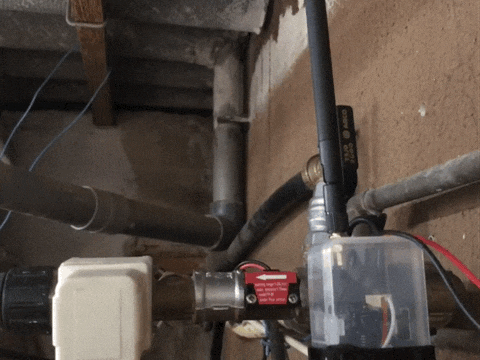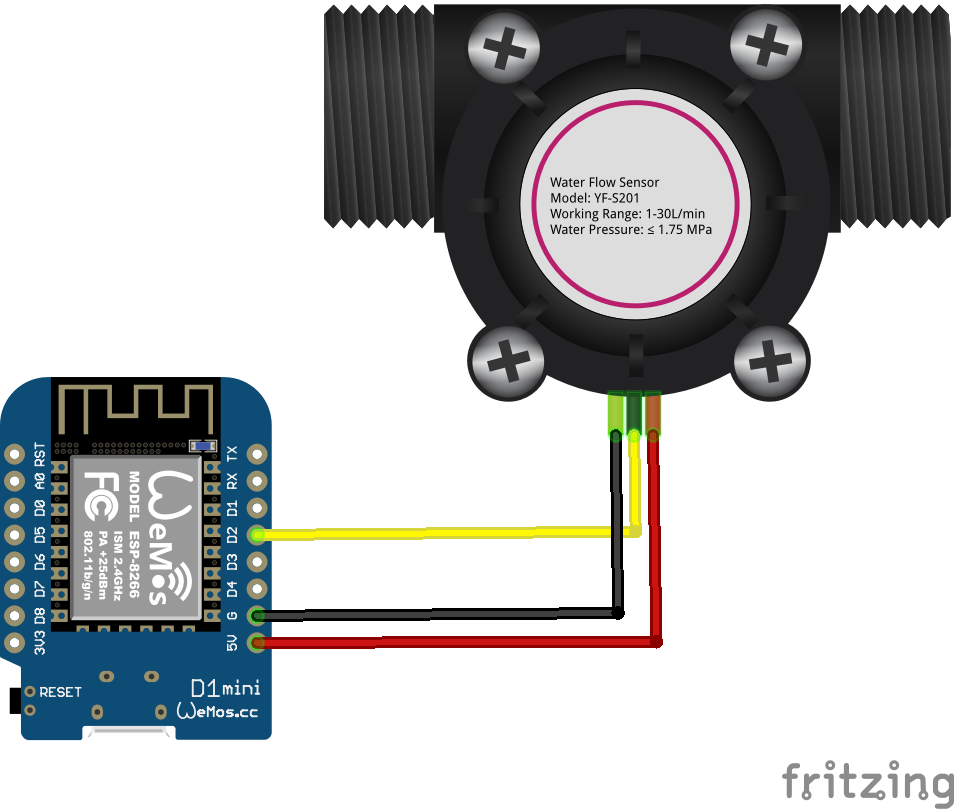Many block of flats in Mallorca have only one water mater. Obviously, not all residents consume the same amount of water. So the contribution to expenses is not fair.
Deployed ideaI have developed my own home automation architecture. The archetype for any sensor includes a microcontroller based on ESP8266 and connectivity though a MQTT broker.
Another server with Node-RED make the orchestration and integration of all the sensors and services.
The best implementation for this use case is Wemos D1 mini PRO, since a large WiFi range required. And it provides a 5v supplier pinout on board needed for the water flow sensor.
Things used in this projectHardware components
Software apps and online services
How does it work?This sensor sits in line with your water line that you want to measure and contains a pinwheel sensor to measure how much liquid has moved through it. There's an integrated magnetic hall effect sensor that outputs an electrical pulse with every revolution. The hall effect sensor is sealed from the water pipe and allows the sensor to stay safe and dry.
The sensor comes with three wires: red (5-24VDC power), black (ground) and yellow (Hall effect pulse output). By counting the pulses from the output of the sensor, you can easily calculate water flow. Each pulse is approximately 2.25 milliliters. Note this isn't a precision sensor, and the pulse rate does vary a bit depending on the flow rate, fluid pressure and sensor orientation. It will need careful calibration if better than 10% precision is required. However, its great for basic measurement tasks!
DevelopmentI have used prototyping material. What is working is proof of concept for the use case of the system control of my garden irrigation.
Schematics
Node-RED flow It´s integrated on my home automatization dashboard as a independent flow.
The dashboard includes an alarm and an indicator of daily consumption with a chart showing the historical data of the last three days.











Comments
Please log in or sign up to comment.